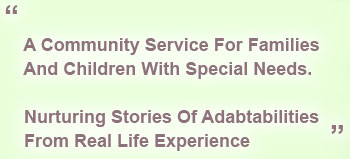References
Berg, I.K. & and Miller, S. (1992). Working With the Problem Drinker: a solution-focused approach. New York: W. W. Norton.
Bernard, K. (1993) “Toward a New Vision for the Developmental Assessment of Infants and Young Children” Zero to Three, National Center for Clinical Infant Programs.
Bertolino, B. (2003) Change-Oriented Therapy with Adolescents and Young Adults,W.W. Norton
Briere, J. (1992) Child Abuse Trauma Interpersonal Violence: The Practice Series (awesome impact of physical, sexual psychological and emotional negelect)
Brody, H. (1994) “My story is broken; Can you help me fix it—Joint Construction of Narrative” Literature and Medicine 13, no. 1 (Spring) pg. 79-92
Cambell, T. (1995) “Conducting a Family Interview” from The medical Interview by M. Lipkin(1995) Springer Book
Carey, W. (1986) “The Difficult Child” Pediatrics in Review, Vol. 8 No. 2, August pg 39-45
Chess, S. (1999) Goodness of Fit: Clinical Applications fro Infancy to Adult Life, Bruner Mazel Book
Coleman, W. (1997) “Family focused peds: Solution –oriented techniques for behavioral problems, Contemporary Pediatrics July pg. 121 on.
Crowell, J.(2003) “Assessment of Attachment Security” Developmental and Behavioral Pediatrics Vol. 24 No. 3 June
DeGangi, G. (2000) Pediatric Disorders of Regulation in Affect and Behavior, Academic Press
DeMaria, R. 1999) Focused Genograms, Brunner-Mazel
DeShazer S. (1985). Keys to Solutions in Brief Therapy. New York: W. W. Norton
Dunst, C. (1994) Supporting and Strengthening Families, Brookline Books
Durrant, M. (1995) Creative Strategies for School Problems, W.W. Norton
Fonagy, Peter (2003). “ Development of Psychopathology from Infancy to Adulthood: the Mysterious The Unfolding of Disturbance in Time.” Infant Mental Health Journal, Vol. 24(3), 212-239
Greenspan, S. (2004) Clinical Assessment in Infancy and Early Childhood- Chapter 7, Textbook of Child and Adolescent Psychiatry-3 rd edit.
Greenspan, S. (1998) The Child with Special Needs, Perseus Books( very good information on interventions to build on development. Chapters on Floortime excellent)
Gunar, M.(2003)”Brain and Behavior Interface: Stress and The Developing Brain” Infant Mental Health Journal, Vol. 24(3), 195-211
Ivey, A(1993) Developmental Strategies for Helpers, Micro Training Asso. North Amherst, Mass.
| [Back to Top] |
Lieberman, A. (2005) Don’t Hit My Mommy Zero to Three Press( working on the relationship between parents and children)
Lutz, S. (2004). “Connecting Cognitive Development and Constructivism.” Constructivism in the Human Sciences, Vol. 9(1), p. 67-90
Marshak, L (1999) Disability and the Family Life Cycle, Basic Behavioral Science
O’Hanlon, W. & Wilk, J. (1987). Shifting Contexts: The generation of effective psychotherapy. New York: Guilford.
Metcalf, L. (1997) Parenting toward Solutions Prentice Hall
Nickel, R. (2000) Caring for Children with Disabilities and Chronic Conditions, Paul Brookes Pub.
Payne, M. (2000) “An Overview of Narrative Thearapy” from Narrative Therapy Sage Pub.
Poisson,S., DeGangi, G (1991) Emotional and Sensory Processing ProblemsRegi LourieCenter
Rolf, J. (1990) Risk and Protective Factors in the Development of Psychcopathology, Cambridge Press
Shapiro, J. (1996) “Family medicine in a Culturally Diverse World: A Solution Oriented Approach” Educational Research and Methods Vol. 28, No. 4 pg.249-255
Small, M. (2003) Our Babies, Ourselves: How Biology and Culture Shape the Way We Parent, Anchor Book
Sullivan, P. (2000) “Maltreatment and Disabilities” Child Abuse and Neglect, Vol 24, No. 10 pg. 1257-1273
Varley, C. (1990) “Psychopathology in Young Children with Developmental Disabilities” CHC Spring Vol. 19. No. 2
Resources
A few resources and emphasis of opinion of important interventions: We believe the “Floortime” approach which is a component of the DIR programming (Developmental, Individual Difference, Relationship model) has important potential contributions to Special Needs Children. Especially when these kids have not responded to traditional approaches. Read about DIR on www.icdl.com. as well as at www.floortime.org. This is also a good site for parent referral. Don’t forget The Special Needs Child by Greenspan.
Closely related to the Developmental-Relationship approach are the various suggestions for Attachment Related issues. Parents have told us they like, How to Talk so Kids will Listen and Listen so kids will Talk by Adele Faber. Also Raising an Emotionally Intelligent Child by John Gottman is helpful reading for anyone involved with children. Helping younger children develop a sense of empathy, social abilities, boundaries and access to building symbols—look at It Takes Two to Talk (parents guide to helping children communicate two way) by Ayala Manolson, The Hanen Center, Toronto 416-921-1073. or Thinking about you Thinking about Me by Michele Winner. A little more involved, but a great social language enhancement for perspective taking for disabled child. (2002) San Jose, 408-557-8595. If you want a more scientific source substantiating for parents the brain basis for parenting that builds attachment-bonding with your child, with the brain in mind look for Parenting from the Inside Out by Daniel Siegel (2003)
There are tapes for help understanding sensory reactivity and modulation, The Out of Synch Child by Carol Kranowitz, Sensory Resources (2001). Buy the book by the same name.
Finally, We would like to refer those interested in how to re-author and re-story by checking Narrative Therapy on the Web especially try www.dulwichcentre.com.au for articles as well as solution focused therapy. Check out a powerpoint at www.drugnet.bizland.com/powerpoint/sfbt.ppt.
Our best practices for children with a variety of developmental disabilities is www.ddhealthinfo.org.
| [Back to Top] |








Social Networks
Follow Us